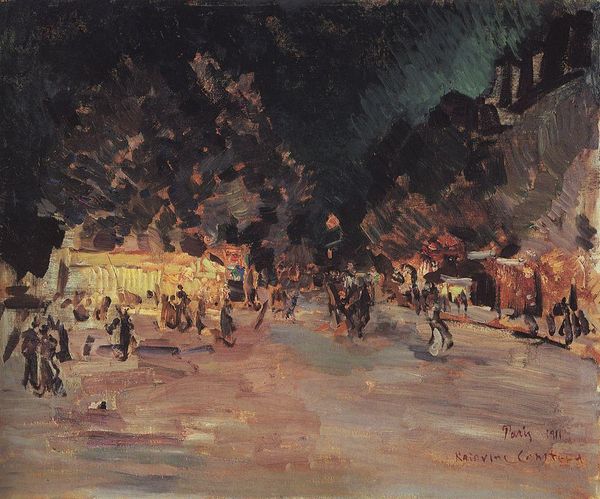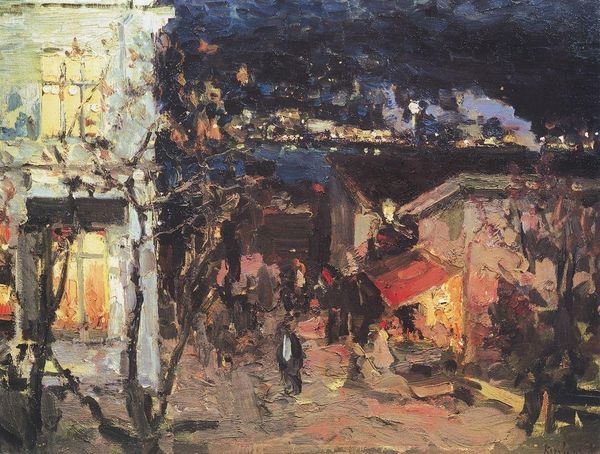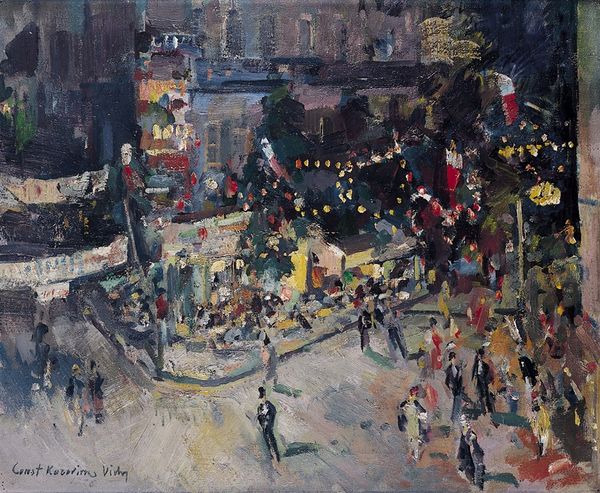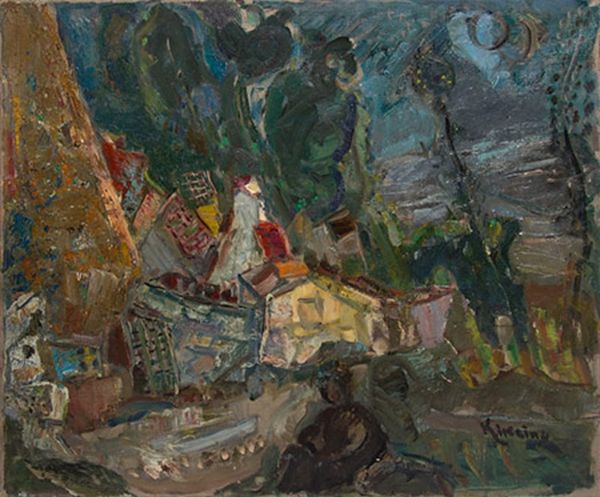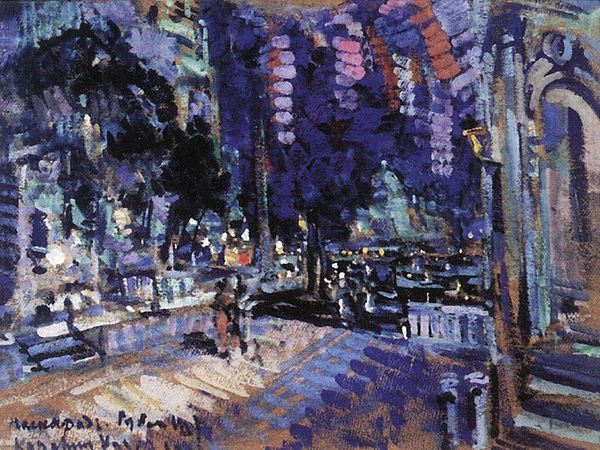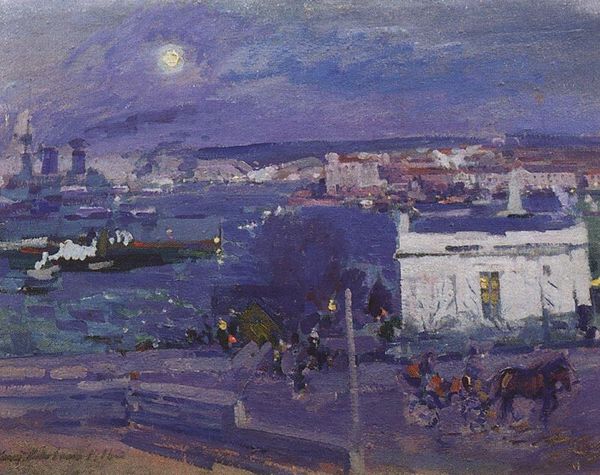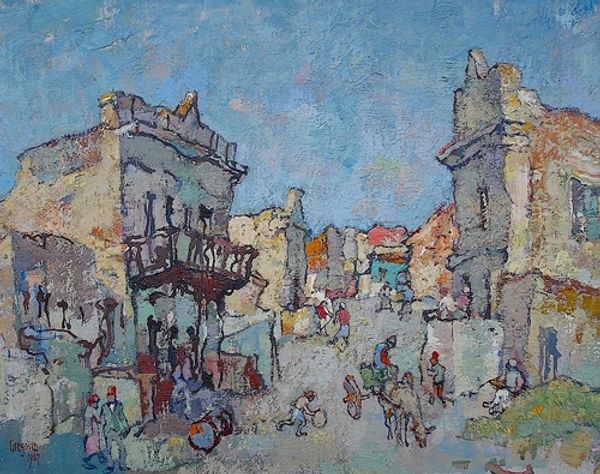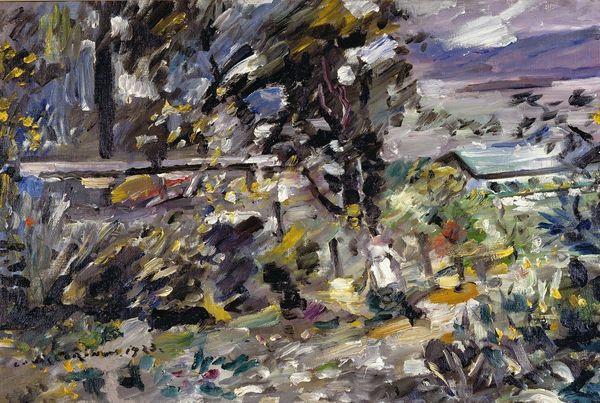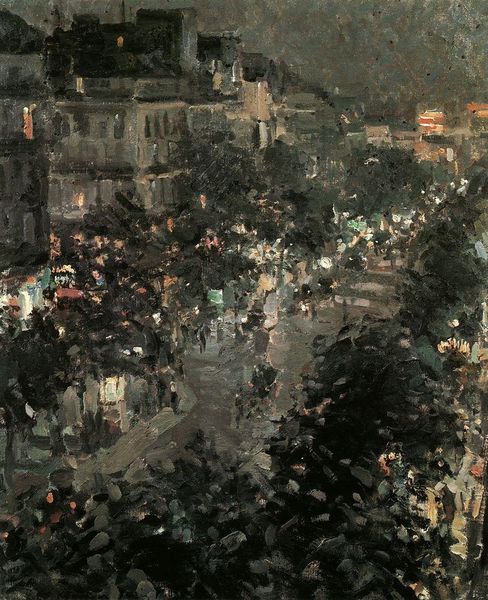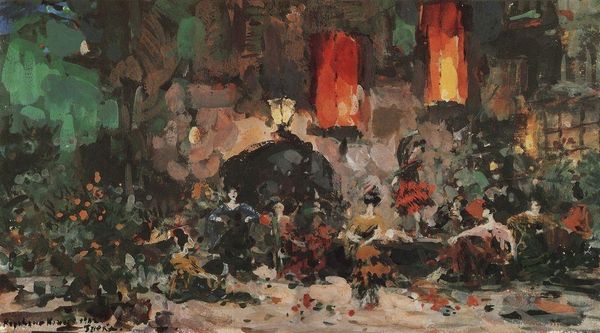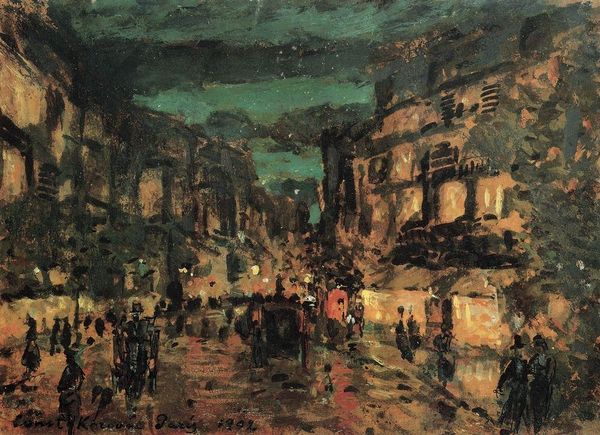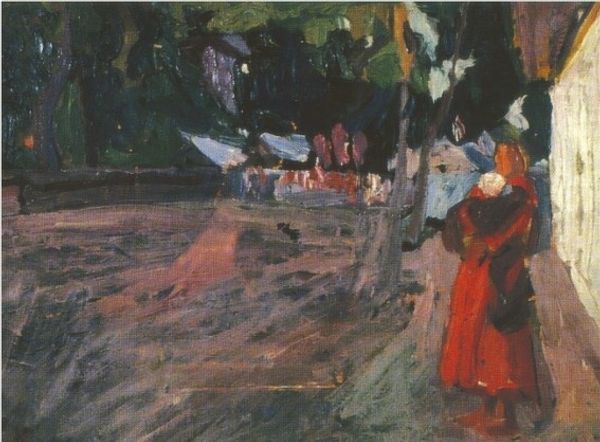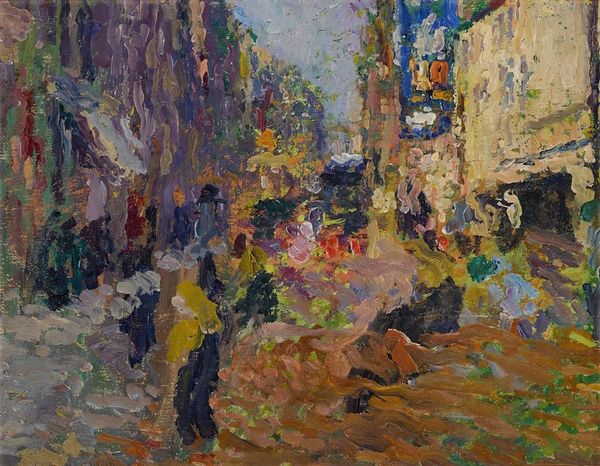
Copyright: Public domain
Editor: This is Konstantin Korovin's "Paris Boulevard," painted in 1911, using oil paints. I'm immediately struck by the frenetic energy he captures, despite the soft, almost hazy, application of the paint. What's your take on this piece? Curator: Considering its materiality, the rapid, visible brushstrokes weren't merely aesthetic choices. They reflect the changing pace of life at the turn of the century, brought about by industrialization. What would be the socio-economic status of people enjoying a walk through this street? Editor: Presumably, the upper or middle classes, able to afford leisure time and a stroll in the capital? Curator: Exactly. This is represented, I think, by the efficient way in which paint is used, suggesting both movement and a certain superficiality in the portrayal of these subjects, as they are types more than individualized portraits. How might the choice of oil paint itself contribute to this? Editor: Well, oil allows for blending and rework, but here, it seems to prioritize speed. Maybe reflecting the increasing accessibility and disposability of leisure experiences, mass production is in play? Curator: Precisely. This impressionistic style, which focuses on a moment, uses material in such a way that you suggest Korovin wants to draw attention to the new rhythms of capitalist life. Did art help shape that view, or was art used as an avenue to represent these new modes of living? Editor: That's fascinating! I'd always thought of Impressionism as simply capturing light, but you've made me realize its connection to the societal changes happening at the time. I see now there's much more depth here than initially meets the eye.
Comments
No comments
Be the first to comment and join the conversation on the ultimate creative platform.
